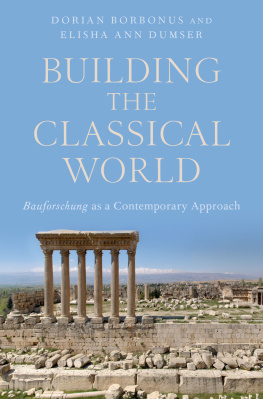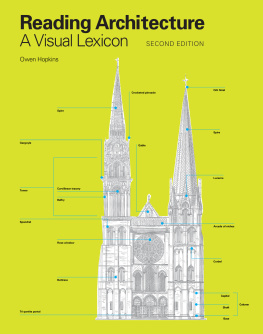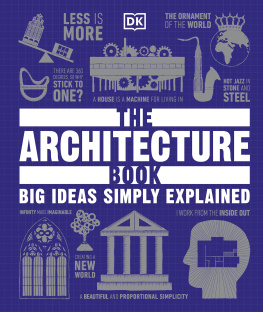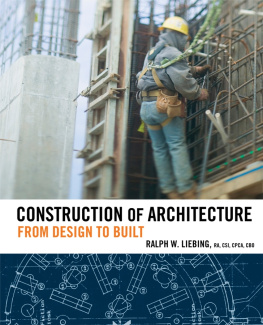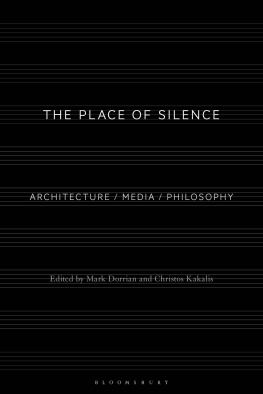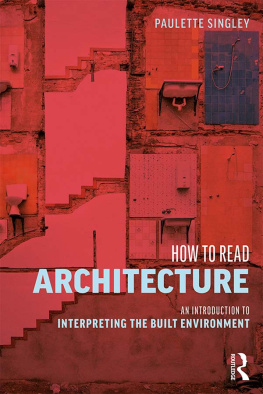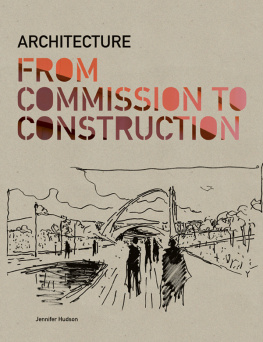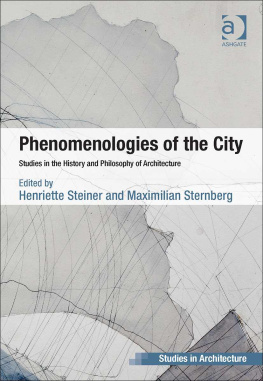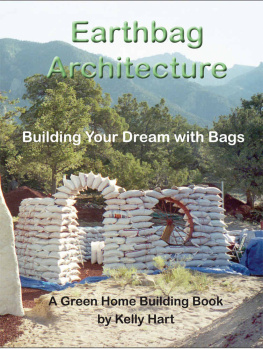Building the Classical World

Oxford University Press is a department of the University of Oxford. It furthers the Universitys objective of excellence in research, scholarship, and education by publishing worldwide. Oxford is a registered trade mark of Oxford University Press in the UK and certain other countries.
Published in the United States of America by Oxford University Press
198 Madison Avenue, New York, NY 10016, United States of America.
Oxford University Press 2022
All rights reserved. No part of this publication may be reproduced, stored in a retrieval system, or transmitted, in any form or by any means, without the prior permission in writing of Oxford University Press, or as expressly permitted by law, by license, or under terms agreed with the appropriate reproduction rights organization. Inquiries concerning reproduction outside the scope of the above should be sent to the Rights Department, Oxford University Press, at the address above.
You must not circulate this work in any other form and you must impose this same condition on any acquirer.
CIP data is on file at the Library of Congress
ISBN 9780190690526
eISBN 9780190690540
DOI: 10.1093/oso/9780190690526.001.0001
Contents
Margaret M. Andrews
Hansgeorg Bankel
Dorian Borbonus
Elisha Ann Dumser
Samuel Holzman
Hermann J. Kienast
Alexander von Kienlin
Lynne C. Lancaster
Katja Piesker
Klaus Rheidt
Mark Wilson Jones and Georg Herdt
Ulrike Wulf-Rheidt
Stephan Zink
To locate the full citation for a publication, please refer to the bibliography of the chapter in which the illustration appears.
Cover: Baalbek, Temple of Jupiter, view from the south. Photograph by Daniel Lohmann.
Table
The chapters in this book originated as papers delivered as invited plenary lectures at the March 2015 symposium Against Gravity: Building Practices in the Pre-Industrial World. The conference celebrated the work and achievements of Dr.-Ing. Lothar Haselberger, the Morris Russell Williams and Josephine Chidsey Williams Professor in Roman Architecture at the University of Pennsylvania from 1991 to 2015. This book is dedicated to Professor Haselberger by his students and colleagues who have contributed to its contents. It both recognizes and demonstrates the impact that he has had on the discipline, and especially on its practice in the United States.
The volume was made possible by a generous publication subvention from the 1984 Foundation. We especially wish to acknowledge the support that we received from Mr. Charles K. Williams II. Bob Ousterhout and John Humphrey were early supporters of the project; without their inspiration, this volume would not have come into existence. Many committed people helped us to obtain original images and secure publication permissions; we thank especially the staff of the Fisher Fine Arts library and the Kislak Center for Special Collections, Rare Books and Manuscripts at the University of Pennsylvania; the Penn Museum Archives; the British School in Rome; the British Museum; Klassik Stiftung Weimar; as well as Univ.-Prof. Dipl.-Ing. Dominik Lengyel, Dipl.-Ing. Catherine Toulouse, Dr. Erofili Iris Kolia, and Professor Stephanie Dalley. Last, but not least, we have benefited tremendously from the tireless efforts of the dedicated staff at Oxford University Press, especially Stefan Vranka and Sarah Pirovitz Humphreville.
Margaret M. Andrews is an assistant professor of classics at Harvard University. Her primary interests lie in Roman urbanism and the processesnatural, historical, and culturalthat drove the physical transformations of Roman cities over the longue dure. Her research and fieldwork are particularly focused on distinguishing the bottom-up, social processes of urban change that unfolded within smaller areas, such as the neighborhood, and the lived impact of institutional and top-down directives. She has published the results of this work in the American Journal of Archaeology and the Journal of Roman Archaeology, and she co-edited the excavation monograph, Villa Magna: An Imperial Villa and Its Legacies. Excavations, 20062010, that resulted from the excavations of this imperial villa and medieval monastery south of Rome. Her current book project is an urban history of Romes Subura from c. 850 bce to 850 ce.
Hansgeorg Bankel was a professor of architectural history and documentation at the University of Applied Sciences in Munich, Germany, from 1993 to 2014. He has documented and studied the Temple of Aphaia on Aegina, resulting in the monograph Der sptarchaische Tempel der Aphaia auf Aegina (1993). His publications extend across a broad range of other topics as well, including the architectural refinements, metrology, polychromy of Greek temple architecture, and the 19th-century German architects Carl Haller von Hallerstein and Leo Klenze. Aside from his current work on Minturnae, he is also carrying out architectural research at Priene and Knidos in Western Turkey.
Dorian Borbonus is an associate professor at the University of Dayton where he teaches Greek and Roman history. He studied classical archaeology at the Freie Universitat Berlin and received his PhD in the art and archaeology of the Mediterranean World from the University of Pennsylvania. His research treats the funerary culture of ancient Rome and in particular the phenomenon of organized collective burial. His monograph, Columbarium Tombs and Collective Identity in Augustan Rome (2014), was published by Cambridge University Press. He was a Rome Prize fellow in 201617, pursuing a project that traces the development of funerary culture in imperial Rome.
Elisha Ann Dumser is an associate professor in the Myers School of Art at the University of Akron where she teaches art history. Her research focuses on imperial architecture in late antique Rome and on issues related to the reuse of architectural materials and building sites. Her publications include Mapping Augustan Rome (2002, reprinted 2008), a chapter on the urban topography of Rome for The Cambridge Companion to Ancient Rome (2013), and a chapter on visual literacy and reuse for Reuse and Renovation in Roman Material Culture (2019). Currently, she is working on a monograph devoted to the architectural patronage of Maxentius in Rome.
Georg Herdt received his architecture degree from the Technische Universitt Carolo-Wilhelmina zu Braunschweig and TU Munich, before taking a research position at the University of Bath on a project investigating the development of the Ionic capital in the Archaic period. He went on to earn a PhD at the University of Bath, with a thesis focused on Greek votive columns. He has participated in the investigation, documentation, and reconstruction of ancient structures on several excavations around the Eastern Mediterranean.
Samuel Holzman is an assistant professor of Greek architectural history at Princeton University. He earned his PhD in 2019 under Lothar Haselberger at the University of Pennsylvania. His dissertation, Bilingual Ionic Column Capitals: Perceptions of the Past in Greek Architecture, 6th3rd c. b.c.e. (2019), explored archaism and perception in Ionic architecture. He has published journal articles on diverse topics, including ancient music (

